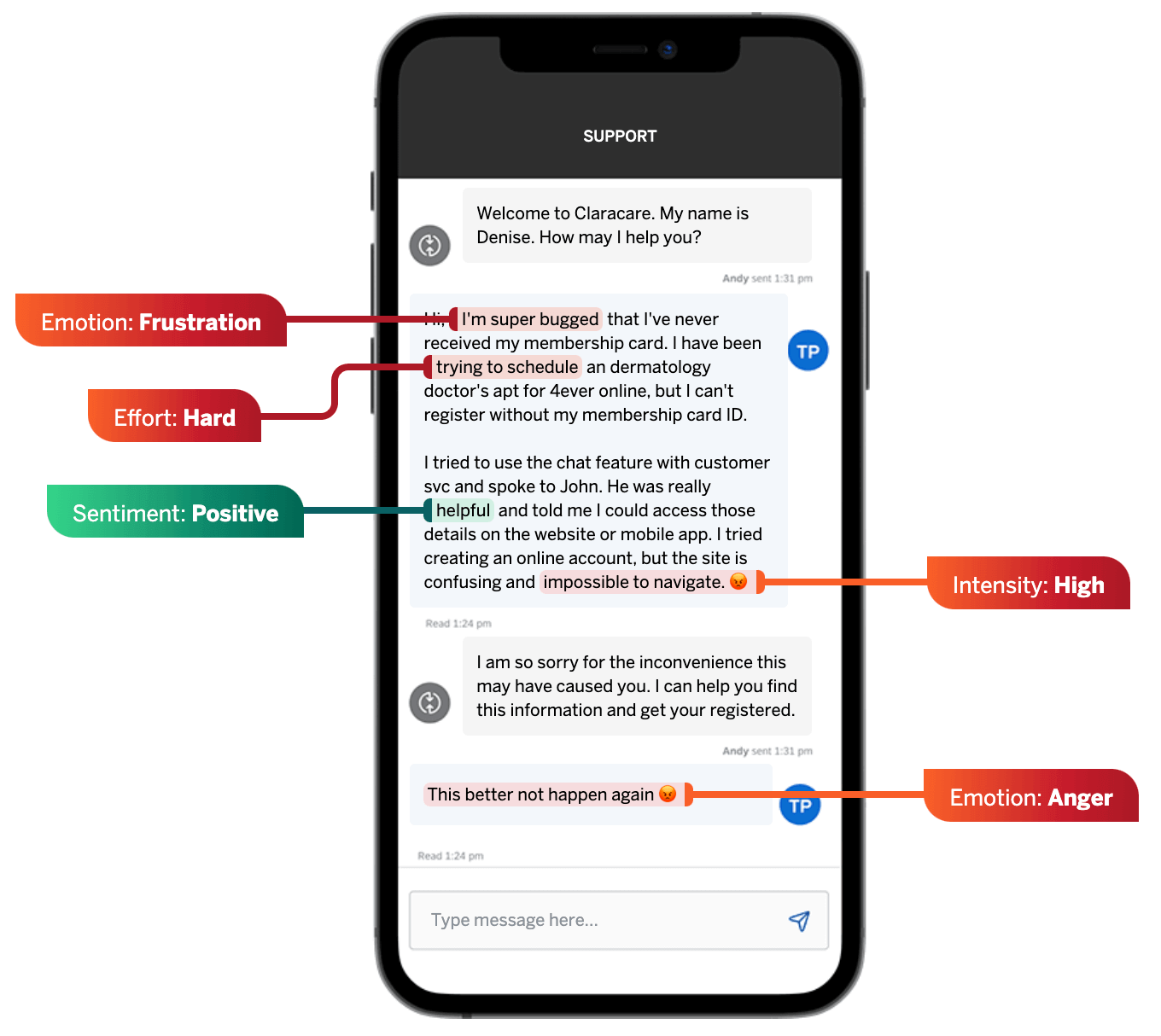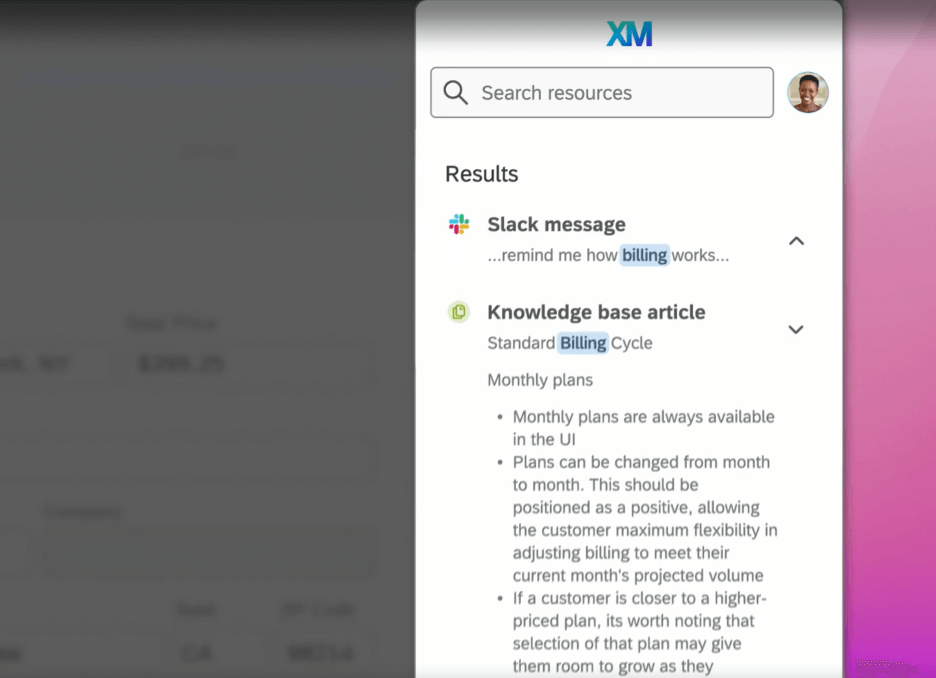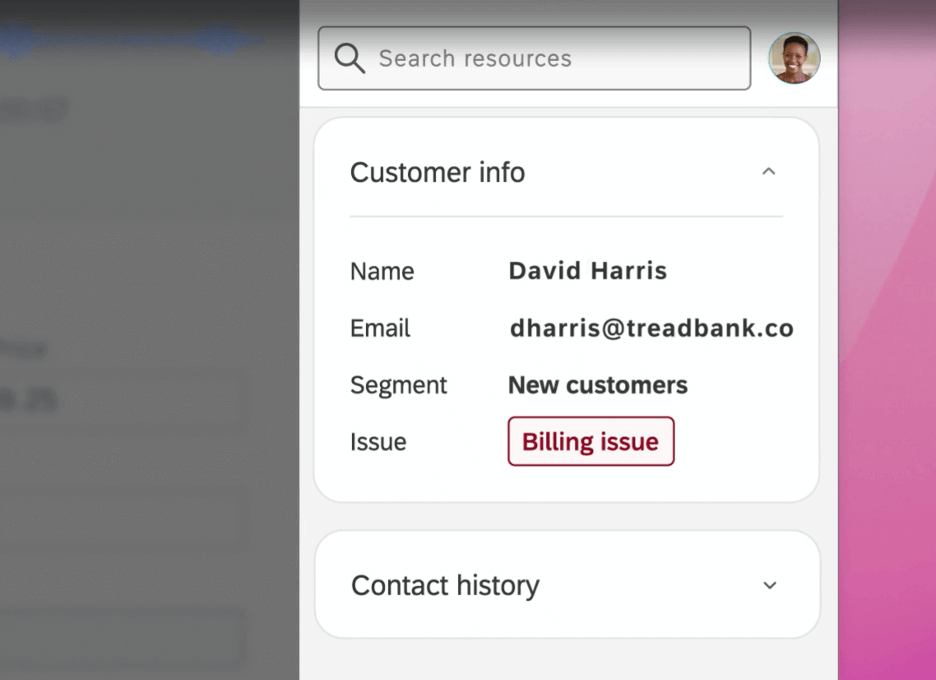How you deal with customer issues can be the difference between success and failure. It can be the difference between a lifetime buyer and a one-and-done disappointment. And that’s especially true in times of economic uncertainty – when consumers are more careful with their spending than ever.
We know from our own research that some 63% of consumers feel like brands need to do better at making them feel heard, which paints a picture of a customer support environment – spanning industries – that still leaves something to be desired in terms of agent efficiency, issue resolution, and empathy.
But that doesn’t need to be the case. What if you could use technology to help agents focus and demonstrate better empathy in real-time? Welcome to the world of real-time agent assist.
Free guide: Reimagining omnichannel CX in the age of AI
What is agent assist for contact centers?
‘Agent assist’ is a capability found in leading customer experience software suites that provides real-time prompts to help contact center agents level up their customer support.
It leans on natural language understanding and machine learning AI to analyze phone conversations in real-time, then uses that insight to deliver agents suggestions and information to help them resolve issues with greater empathy and efficiency.
Crucially, this is much more powerful than traditional systems that rely simply on tracking metadata and keywords, because it bakes next-generation AI thinking into the equation.
In short? These are real-time prompts designed to help agents keep conversations flowing in the right direction, solve issues, and turn disgruntled callers into lifelong customers.
How does real-time agent assist work?
Agent assist listens to conversations as they happen and automatically identifies a customer’s sentiment, history, and reasons for their call. It then uses this live information, along with that data on the customer’s past interactions and insights from other interactions, to make recommendations specific to each call.
These recommendations are really useful because they help agents focus on listening to the customer, rather than digging through menus .
An AI-powered agent assist feature can recognize when it’s appropriate to deliver in-call reminders to the agent, like when they’re heading off-script or out of compliance, when they should show more empathy for the customer, or when to offer a discount to an unhappy customer.
Behind all this is a dual-layering of AI technology: natural language processing and machine learning.
Here’s how they work:
Natural language processing
Natural language processing (NLP) is a branch of AI that focuses on making sense of human speech and written text. With the help of statistical methods and machine learning algorithms, NLP can understand the context and meaning of what people say or write.
While simple speech-to-text software can transcribe what we say into written words, NLP goes a step further by understanding complex phrases and terminology – and even extracting more abstract qualities like sentiment from a message.

The way we speak and write is wildly complex, but our brains are really good at understanding the meaning and intent behind someone’s words – even if they’re spelled wrong or delivered in a roundabout way. NLP software aims to mimic the way our brains process language to understand meaning and context.
To do this, NLP uses a wide range of statistical methods, processes, and language detection tasks. These include speech-to-text, which converts human speech into text, and tagging and categorizing, which uses machine learning to sort words into categories like nouns and verbs. NLP can also be used to recognize names and entities, such as people’s names or place names.
Once the text or audio has been processed, NLP can use natural language understanding and deep learning models to identify emotions and overall positive or negative sentiment.
Machine learning
Machine learning is a characteristic of an AI engine that helps algorithms improve over time, much like how human brains do.
If you think back to how you learned to read, write or do math, you’ll recall that you probably started out getting a lot of things wrong. But with the right teaching, direction, and repetition, you slowly improved over time. In essence, that’s how machine learning works.
The main difference is that AI networks aren’t learning with any inherent sense of consciousness or awareness. While they can and do become incredibly complex, machine learning processes are never really aware of the why behind their learning.
A great example of this is a machine learning AI getting to grips with levels of Super Mario games. The AI here can learn that doing X or Y results in Mario losing a life, so it’ll do something different next time until it can complete the entire level. But it doesn’t know that it’s playing a computer game, or why. That’s machine learning in a nutshell.
What can real-time agent assist do?
Agent assist features can be a fantastic addition to the overall customer experience, empowering agents to manage live customer interactions with superhuman empathy and knowledge.
To demonstrate how, let’s take a look at a few example features:
1. Empathy spot checks
Empathy is a hugely important part of any customer interaction. The customers talking to your agents are often upset about being let down, and they want to have that recognized. Real-time assistance can help by analyzing the call for its content and sentiment, and – at crucial moments – gently reminding agents that it’s more important right now to empathize with the customer’s issue than it is to plow forwards with a solution. That’s alongside the next best actions and prompts designed to deliver better results for each call.

2. Knowledge base lookup
Agents have a lot to deal with on each call, but the priority should be listening – rather than being distracted with hunting for knowledge articles or resources. AI-powered agent assist features can do that digging on a human agent’s behalf, instantly surfacing the right knowledge base resource at the right time based on what’s being said. In some circumstances, it can even bring up extra insight from third-party apps – like useful Slack messages from your team’s chat history.
3. Personalized retention tools
If a customer’s on the verge of never shopping with you again, a smart agent assist feature will know it. It can then marry the context of what’s happening on this call with customer information about their shopping history, habits, and preferences, and suggest highly personalized offers or discounts that can help sway the conversation toward a better result.
4. Automated call summaries
After-call work can be time-consuming, keeping agents from doing what they do best: helping customers. Luckily, many AI-powered agent assist tools also offer automated call summaries, including an accurate, real-time transcription that bundles all the relevant details into a single source of truth – including why the customer called, the effort needed to resolve the issue, and any next steps. Agents typically then just need to review the automated summary, making for a faster resolution, and less time manually logging each interaction.
Why is agent assist important for business?
Assisting human agents with real-time prompts isn’t about replacing humans in the contact center or automating the vital work of building customer relationships that only a human agent can do. Instead, it’s about leaning on the strengths of AI to supplement the strengths of the agent experience.
And that’s vital to business success. Qualtrics research shows that more than a third (38%) of agents don’t feel they’re set up for success, while only 54% believe that their leadership adequately invests in their team.
That’s not great when you consider it alongside recent consumer trends data, which shows just how important it is to get each conversation right.
For example, 88% feel that the experience a company provides is as important as its product or services, while HubSpot cites that some 93% of customers are likely to make repeat purchases from companies with excellent customer service.

AI can help make a difference here. And, importantly, the people inside your contact center know it. Salesforce suggests that 69% of high-performing agents are actively looking for more situations in which AI can help them.
These trends paint a picture of customers who want to be heard and understood and agents who’re on the hunt for tools that can make that an easier task. Agent assist features, powered by AI, can do just that – improving customer satisfaction while boosting agent effectiveness and engagement.
This is especially important because, as the front line of your customer support, agents often face high levels of burnout and attrition. In fact, we’ve found that as many as one in five agents thinks about quitting on a weekly basis because they don’t have the tools they need to make tasks (including after-call work) more efficient.
How to improve agent productivity with agent assist
Let’s leave off with an example call to show how agent assist and AI-powered conversations can handle a lot of the heavy lifting on a call – saving agents time and preventing them from becoming distracted (for example, by digging through an ever-expanding knowledge base).
Let’s meet David.
David is an ISP user who has been having some issues with his monthly billing statement. He’s noticed that there are some charges on his account that she doesn’t recognize, and he’s not sure why they’re there. But, to make matters worse, this isn’t the first time this kind of thing has happened; in the past, he was accidentally billed twice for a single month’s usage. He decides to call the customer support line to get some answers and resolve the issue. And, rightly, David’s annoyed.

The first thing an agent assist tool will do when our agent begins the call is to highlight David’s relevant customer history, including that double bill from a while back, and encourage the agent to show empathy by saying they understand how annoying it must be that David’s facing a new issue and has had to call again, before pushing on with finding a solution.
Next, an AI assist feature might dig into the current issue that David’s experiencing and automatically pull up the right response from the knowledge base, along with possible causes and solutions.
Say the agent solves the problem but David’s still unhappy. What now? A smart agent assist tool will be able to tell that David doesn’t yet feel compensated for his troubles, so will provide the agent with a personalized offer for three months of free Netflix, knowing that David already purchases a movies package through the ISP.
After the call, with David once again a happy customer, the AI contact center system will note down everything that happened, add it to David’s customer profile, and schedule a follow-up courtesy call in a month’s time. All of which gives live agents the ability to streamline their time and handle future calls with a higher level of quality.
The result? A satisfied customer, and an agent working with the full support of today’s smartest AI technology. That’s the power of agent-assist tools in action.
Free guide: Reimagining omnichannel CX in the age of AI